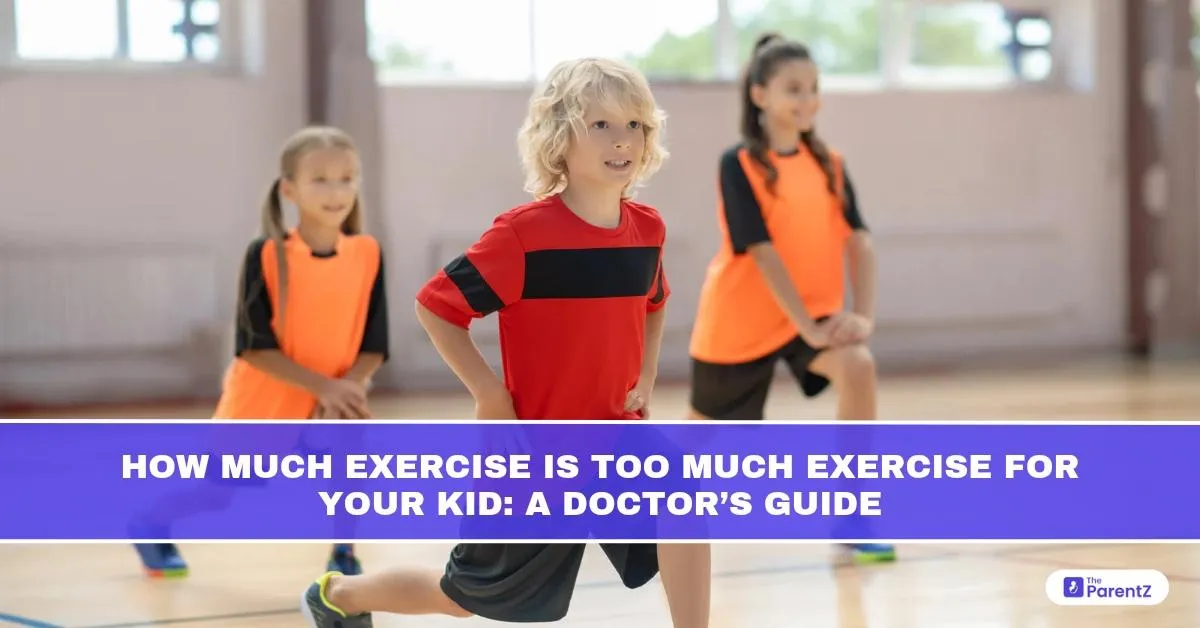Movement Matters But Balance Is Key
In a world increasingly dominated by screens, encouraging children to move their bodies is one of the healthiest things a parent can do. But as more families enroll kids in intense sports coaching, fitness classes, and daily workouts, another question arises: Can children be over-exercised?
Surprisingly, the answer is yes. While physical activity supports growth, mental well-being, and immunity, too much especially without rest or proper nutrition can harm developing bodies. Pediatricians across India are witnessing a rising number of young patients with sports-related injuries, fatigue, delayed growth, and anxiety linked to overtraining.
Let’s decide how much is “just right,” what’s “too much,” and how you as a parent can strike that crucial balance.
Why Kids Need to Exercise But Not Like Adults
Children are not small adults, and their exercise needs differ significantly:
- Growing bones and joints: Overuse or repetitive strain (like long-distance running or daily push-ups) can affect growth plates and lead to permanent damage.
- Immature thermoregulation: Kids don’t sweat efficiently, making them more prone to overheating and dehydration during prolonged exertion.
- Developing muscles: They need strength-building movements, but not through weight training or high-resistance regimens.
- Psychological readiness: The pressure to win, perform, or attend daily classes can cause burnout, anxiety, and even affect academic performance.
How Much Exercise Is Just Right?
According to the World Health Organization (WHO) and the Indian Academy of Pediatrics (IAP):
For Ages 3–5 years:
- 60–90 minutes of play daily (can be broken into small chunks)
- Focus on free play, dancing, running, jumping, and basic balance skills.
- Avoid: Structured fitness classes or anything involving weights or strict routines.
For Ages 6–12 years:
- 60 minutes of moderate-to-vigorous activity daily
- Mix aerobic (running, cycling), muscle-building (monkey bars, climbing), and bone-strengthening (jump rope, hopping).
- Organized sports are okay, but watch for signs of pressure or fatigue.
For Adolescents (13–18 years):
- Same 60-minute guideline, but more sport-specific training can be introduced.
- Include rest days, strength training under supervision, and hydration-focused habits.
Important: At all ages, at least 1–2 days per week should be rest or light activity only, especially if your child is engaged in sports coaching or athletic programs.
Signs Your Child May Be Over-Exercising
Parents often miss the early signs of overtraining, mistaking them for laziness, tantrums, or exam stress. Here’s what doctors recommend watching for:
- Fatigue that doesn’t go away after a night’s sleep
- Mood swings, irritability, or withdrawal
- Increased injuries; shin splints, sprains, joint pain
- Disrupted sleep or nightmares
- Poor appetite, delayed growth, or irregular periods (in older girls)
- Falling grades or lack of focus
These are red flags. Overtraining isn’t always about hours spent, it can also mean poor recovery, lack of rest, or mental pressure.
Pediatrician’s Practical Tips to Prevent Over-Exercising
You don’t have to pull your child out of football class or stop tennis coaching. Just approach it mindfully:
1. Watch the Weekly Load, Not Just Daily
- Limit intense exercise sessions to 3–4 days a week.
- Balance with active rest (walking, yoga, swimming for fun).
2. Nutrition Must Match Activity
- Growing kids need more calories, not fewer when active.
- Prioritize: Homemade meals with whole grains, pulses, dairy, eggs, nuts, fruits, and vegetables.
- Avoid: Energy drinks, protein powders, or gym snacks.
3. Recovery Is Non-Negotiable
- Sleep is essential. School-going kids need 9–11 hours of sleep.
- After each game or class, allow downtime. No rushing into homework or tuition.
4. Choose Coaches Who Prioritize Health Over Medals
- Good coaches watch for signs of burnout and do not push children beyond limits.
- If your child dreads practice or returns in pain regularly, it’s time to intervene.
5. Say No to Social Comparison
- Every child’s stamina and interest vary.
- Avoid comparing your child’s schedule with another’s on social media or in school groups.
Real Cases From Pediatric Sports Clinics
At a popular pediatric orthopedic clinic in Gurugram, doctors recently treated a 9-year-old with a stress fracture from daily skipping and dance rehearsals. Another 14-year-old cricket player was diagnosed with early burnout and vitamin D deficiency due to high physical load and poor diet.
Most of these children weren’t part of competitive academies, they were just trying to “stay fit” based on social trends.
When to See a Doctor
Seek pediatric advice if your child shows:
- Frequent injuries or persistent joint pain
- Chronic tiredness or slow recovery
- Weight loss or lack of weight gain despite good eating
- Menstrual irregularities in teenage girls
- Anxiety or aversion to physical activity
A pediatrician may advise reducing the activity load, adding nutritional support, or referring to a physiotherapist or sports psychologist.
Smart Parenting with Tech: How TheParentZ App Helps Monitor Activity and Growth
When life gets busy, having a smart parenting assistant helps. The TheParentZ Growth and Health Tracker App empowers parents with tools to monitor health without constant guesswork.
Here’s how it supports you:
- Track your child’s weight, height, and BMI over months detect early signs of overtraining or growth stunting.
- Log physical activity, energy levels, and sleep, especially during sports seasons.
- Note injuries or periods of fatigue, making it easier to share with your doctor.
- Customized health insights based on age and gender for smarter decision-making.
Let’s say your 12-year-old is in badminton coaching and suddenly reports fatigue. The app helps you trace trends whether it’s coinciding with exam stress, poor sleep, or excessive sessions giving your pediatrician a clearer picture.
Final Words: Fitness Should Feel Fun, Not Forced
Children should move joyfully. Sports, games, and dancing are part of a rich, healthy childhood not a checklist of achievements. As a parent, your role isn’t just to push your child to “do more” but to notice when to slow things down. If your child wakes up excited to move, plays without pressure, and sleeps peacefully that’s the sweet spot. Let fitness be a part of their life, not the point of it. Your child’s best growth doesn’t come from more reps but from more balance.








Be the first one to comment on this story.